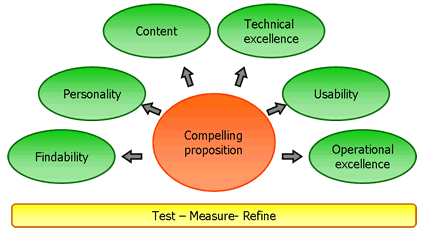There’s an argument brewing that pitches the agile community against the interaction design community. (You get a feel for this here via here ). Personally I don’t get it. The two approaches are a natural fit. You just need a bit of pragmatism and an ability to say “it depends”.
The interaction designers argue for ethnographic research, lots of user research, and only when we have a thorough understanding of the users, their goals and the context of their usage should we start thinking about writing code. The agile developers will say the only thing that is worthwhile is “working software”. Get something out there, quickly, and see what the users think. The agile approach mean that the direction of the software can be changed at the drop of a hat… If you are working in an investment bank, with a small user base who want this approach may be valid. But if you are building a large public facing web site, diving straight into code with little consideration of the users (e.g. their demographics, itentions, motivations etc.) would seem to be somewhat misguided. It need not be like this. At ThoughtWorks we start many engagements with a “QuickStart”. We’ll work with the client to produce a vision of where they want to get to. We’ll listen to end users, sit with them, watch them. Then use models; financial, process and visual to gain concensus and understanding of what the project is aiming to achieve. We do this quickly, focussing upon the outcomes the client are looking for the project deliver.
The visual models are straight out of the interaction designers tool kit: wireframes. Pen and ink sketches of screens, maybe on paper, maybe in PowerPoint or Visio. Alongside this we’ll watch the users, spend time with them and experience how the software will impact their lives. This doesn’t take much time. We don’t look to produce formal documentation – output is scribbled on cards or on flipchart paper stuck on the walls. In two to four weeks we’ve got a good understanding of the as-is situation, and produced a vision of where we want to get to. The benefits of this? The users get a feel for what might be in the application, we can write better stories (requirements) that are more explicit on what is needed and the developers have something more concrete to estimate against. Finally, when it comes to release planning we can visualise what a cut down version of the application might look like (and thus begin to manage expectations that they are not going to get everything in one big bang, and that things will probably change during the journey). This is not big up front design. It is quick and dirty. It is interaction design (e.g. personas, ethnography, low fidelity prototyping, user testing etc) and agile (e.g. rapid, iterative, incremental, tangible… hey! it’s test driven development without code).
Ah! Test driven development? So on my current project we showcased the wireframes and a comment came back from one of the users (someone who will actually use the application, not one of the “business representatives driving requirements).
“What you guys are doing is great,” he said. “UAT at the beginning”.
I rather like this, but with a caveat. All to often the first time the users see an application is when it comes to user acceptance testing- UAT. UAT has always struck me as a bit weird because it is rarely about “acceptance” (even weirder how it is so well embedded in the IT development lifecycle whilst usability testing rarely gets a look in). It is more about testing for bugs that the developers may have missed. It’s not whether I, as a user “accept” that the product is any good. It is probably the first time I’ve seen it. Maybe I’ve got a test script to run through, I can play with the application, but it is so late in the lifecycle that if I don’t “accept” that it is any good, nothing is going to change.
Agile proponents will argue that with small, regular drops, users are able to raise concerns earlier in the software lifecycle. Regular showcases at the end of each iteration will bring to light issues around “acceptability” and acceptance of the software. But these showcases are usually with the “super user”, the “customer” who is feeding the team requirements. Rarely is it the little person who will actually use their application. And then, even in agile, you’ll often have UAT. It will come at the end of a number of iterations, before the first “release”. But already the direction of the application is set. There is less to accept (and therefore it is easier for the direction of the development to change – one of the benefits of agile) but there is still scope for users to dislike and reject what is being released. And that is why doing UAT at the beginning, user acceptability testing, rapidly, user the interaction designers toolkit is such a good thing. You’re getting the users involved. Your testing and refining the vision. And probably getting usability in there by stealth.
Here’s a paper I wrote about this a while ago: Agile and Interaction design paper
